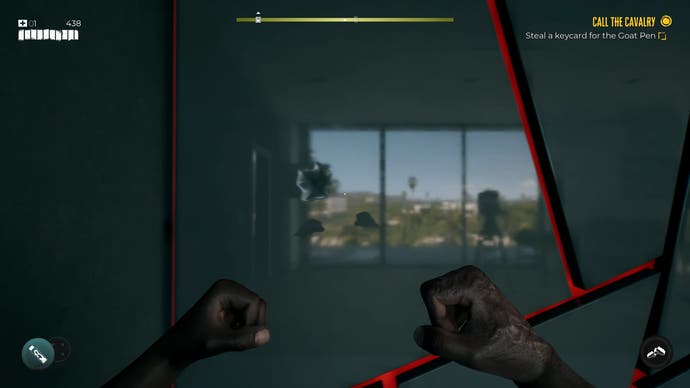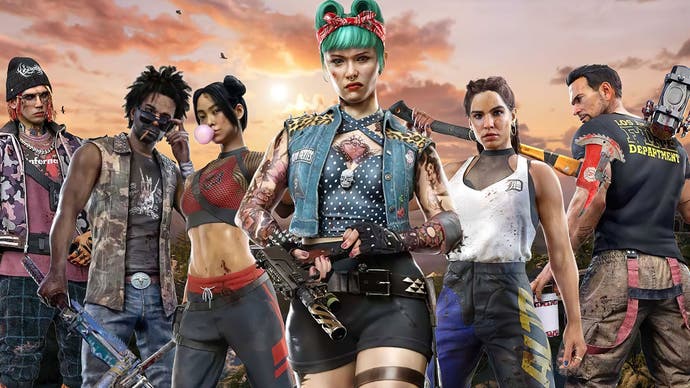Dead Island 2 PC tech review: a capable UE4 port that's smooth and stutter-free
Optimised settings, performance testing and more from DF's newest contributor.
Dead Island 2 is something of a cross-platform success story, offering reasonable image quality and performance across both last-gen and current-gen consoles - so how does it fare on PC? Does it buck the trend of recent Unreal Engine 4 releases by delivering a stable, performant experience, or is it another disappointing PC port in the 2023 #StutterStruggle saga?
To find out, I played through around the first half of the single-player game on a range of PC hardware to nail down optimised settings and run performance tests.
Before we get to the results, let's start with that first boot experience - which is broadly positive. The initial logo screens can be skipped with the enter key, but you'll want to make sure you don't skip the (rapid) shader compilation step. It's easily done, but this pre-compiling shaders ahead of gameplay is key in ensuring a smoother, more consistent PC gaming experience. For those wondering, consoles are fixed hardware platforms, so shaders are shipped with the code.
You have a good number of options available for a modern PC release, including support for arbitrary resolutions at a variety of aspect ratios, borderless full-screen and FOV adjustment. Wider ultra-wide aspect ratios are cut back dramatically to 16:9 for cutscenes, but otherwise work pretty well. The settings screen does the job, but I'd have liked to see a game scene in the background to judge how setting tweaks affect image quality in real-time, but you can at least change settings from low to ultra without restarting the game.
In line with its last-gen roots, Dead Island 2 looks good but doesn't push any boundaries graphically, with a fairly standard lighting model with great use of indirect lighting, nice-looking character models and some slick animations. Loading times are also rapid, in line with the SSD-equipped current-gen consoles.
The only real concern here is image quality, which appears a little soft at times - even at native 4K. This is down to the limited number of sensible AA options, with TAA being a bit blurry (but stable) at its high setting and FSR2 adding more detail but exhibiting shimmering in leaves, fences or grates. Ultimately I opted for TAA here. VRS (variable rate shading) is also available, but I didn't care for the way it degraded the image so I left it off for my playthrough.


Another oddity is how reflections are handled. Rather than opting to cover or shatter mirrors in its environment to avoid this tricky rendering situation like many other games do, Dead Island 2 has mirrors all over the place early on, but they don't work - you just get a low-res cube map that warps awkwardly as you pass by. Equally bizarre is that the game's screen-space reflections aren't applied to many of the world's reflective surfaces, and when they are they transition awkwardly on and off the screen. These moments are a bit jarring - as are occasions where you'll spot your hands just floating in mid-air in a mirror. I did see similar issues on PS5 too, so hopefully a fix can be provided in the future.
Moving onto performance, as current-gen consoles run at 60fps I think that's a fair target for higher-end and mid-range PCs too. I used the game's intro sequence as a benchmark, as it offers explosions, particles, volumetric lighting and real-time cutscenes.
My higher-end configuration with RTX 3080 Ti and Core i7 13700K processor ran the game maxed out at 4K at a stable 60fps for almost the entire run, with little to no shader compilation stutter either. A more mid-range config with an RTX 2080 and a Ryzen 9 3900X set to use just six cores (one chiplet, mimicking the Ryzen 5 3600) offered a practically unplayable frame-rate at this resolution, and even dropping to FSR quality mode was well below the 60fps threshold. I guess that means we need some optimised settings!
To track these down, I fired up the PS5 version, which I worked out resembles the PC version with shadows and effects turned down from ultra to medium. These two settings tweaks alone provide a big performance bump, allowing the mid-range spec to hit a stable 4K 60fps with FSR quality mode - although performance sometimes crashed into the 40s for no apparent reason.
Native 1440p provides a more consistent experience, with frame-rates often reaching 100+ fps. I played through the game like this and can recommend it - especially with VRR - but without VRR you may want to use something like RTSS to cap your frame-rate to 60fps as the in-game cap causes improper frame pacing. For anyone wondering about traversal stutter, I didn't experience this beyond tiny hitches - so a fairly good turnout.
Therefore, my optimised settings are as follows:
| Mid-range (~RTX 2080 + Ryzen 5 3600) | 1440p + TAA (high) shadows + effects (medium) other settings (ultra) |
| High-end (~RTX 3080 + Core i7 13700K) | 4K + TAA (high) shadows + effects (high) other settings (ultra) |
Dead Island 2 on PC definitely has its quirks, with ugly reflections and a subpar collection of AA techniques. It's another title that ships only with FSR2 as an upscaling solution in a world where there's little reason why DLSS and XeSS should be skipped. We've even seen UE4 titles like Ghostwire: Tokyo that port Epic's own, excellent, TSR from UE5 back to UE4. We'd really hope to see this situation improved in a forthcoming title update.
On the whole though, Dead Island 2 runs better than many recent Unreal Engine 4 releases in terms of performance and stability, without sacrifing much in terms of image quality. So if developers Dambusters can do it following a nine-year development cycle across three different development teams, we ought to expect the same level of quality from less troubled releases too. I'm not holding my breath, but perhaps 2023 is going to be better than we expected.










